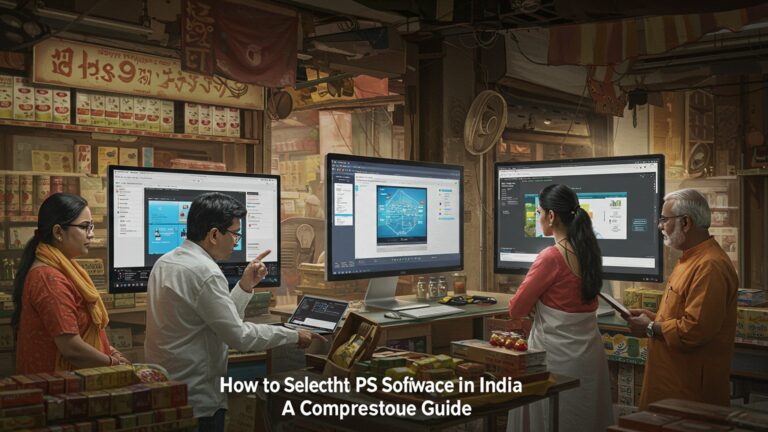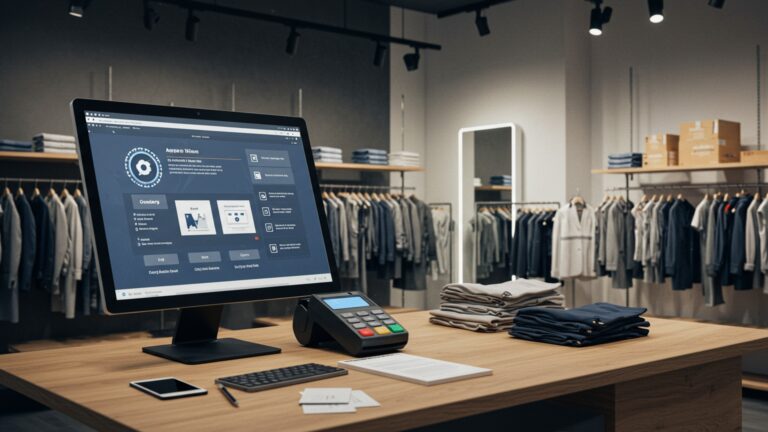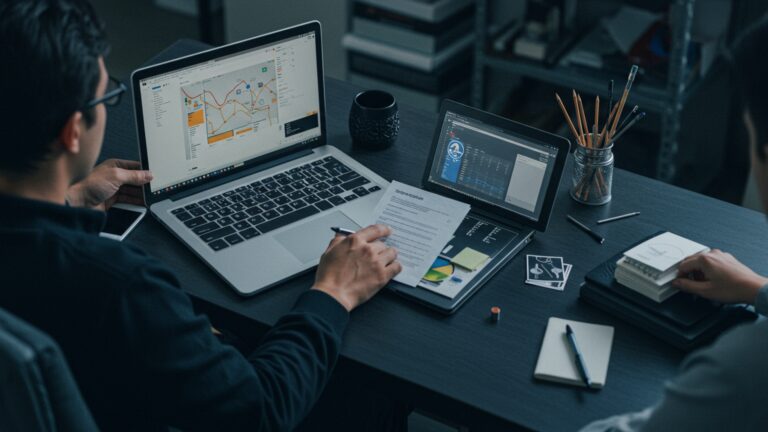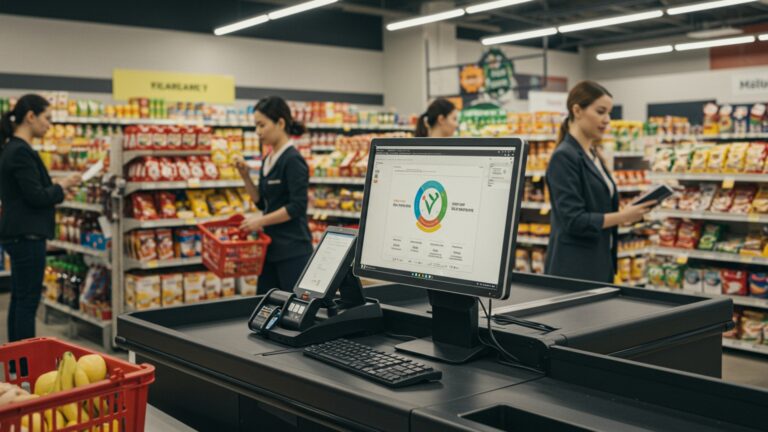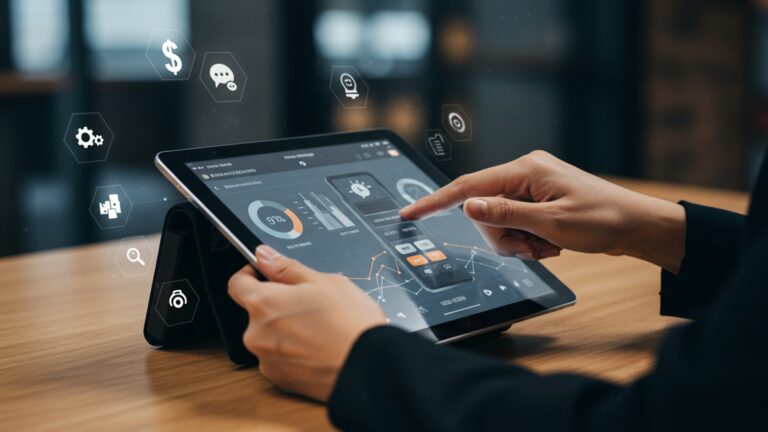How to Master Billing and POS Software for Efficient Retail Management
Retail success in today’s dynamic market hinges on more than just great products; it demands operational excellence, spearheaded by advanced billing and POS software. With consumer expectations for seamless omnichannel experiences and rapid checkout increasing, legacy systems simply fall short. Modern cloud-based solutions now offer real-time inventory synchronization, integrated contactless payment processing. invaluable data analytics, transforming mundane transactions into strategic insights. Mastering these powerful platforms moves retailers beyond basic sales recording, enabling predictive restocking, personalized customer engagement. a significant boost in overall efficiency and profitability in an ever-evolving landscape.
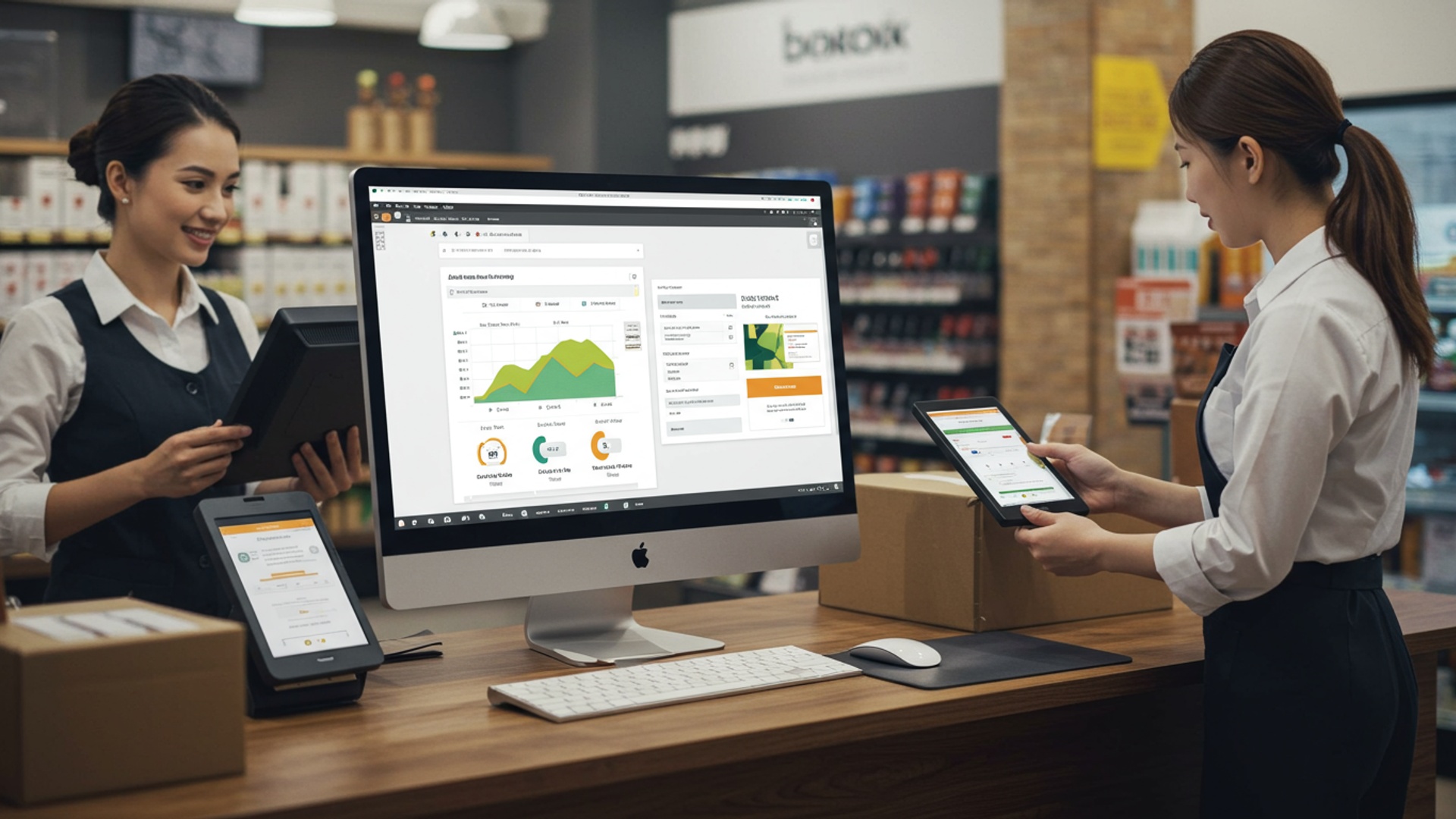
Understanding the Core: What is Billing and POS Software?
In the rapidly evolving retail landscape, efficient operations are paramount. At the heart of these operations lies robust billing and POS software. To truly master these tools, it’s essential to first grasp their fundamental definitions and their symbiotic relationship.
What is Point of Sale (POS) Software?
A Point of Sale (POS) system is more than just a cash register; it’s the central hub where retail transactions are processed. Think of it as the brain of your retail business, managing sales, processing payments. often integrating with various other business functions. When a customer makes a purchase, the POS software records the sale, calculates the total, applies discounts, processes the payment (cash, credit card, mobile payment). issues a receipt.
- Transaction Processing: The core function, handling sales, returns. exchanges.
- Payment Gateway Integration: Securely processes various payment methods.
- Receipt Generation: Provides digital or physical proof of purchase.
- Basic Inventory Tracking: Updates stock levels as items are sold.
What is Billing Software?
While often used interchangeably with POS, traditional billing software primarily focuses on invoicing, managing accounts receivable. tracking financial transactions. It’s designed to generate detailed invoices, manage customer accounts. track payments due or received. In a retail context, modern billing and POS software often converge, with POS systems incorporating advanced billing functionalities.
- Invoice Generation: Creates detailed bills for goods or services.
- Accounts Receivable Management: Tracks outstanding payments.
- Payment Tracking: Records when invoices are paid.
- Customer Account Management: Maintains a history of customer purchases and payments.
The Symbiotic Relationship in Retail
For modern retail, the distinction between POS and billing software blurs considerably. Contemporary billing and POS software solutions are integrated platforms that handle everything from the initial customer interaction at the checkout counter to the backend financial reconciliation. They streamline the entire sales cycle, ensuring accuracy, speed. comprehensive data capture. Without a unified system, retailers face manual errors, disjointed data. significant operational inefficiencies.
Key Features and Components of Modern Billing and POS Software
To truly leverage billing and POS software for efficient retail management, it’s crucial to grasp the breadth of features they offer. Modern systems are comprehensive, designed to touch almost every aspect of your retail operation.
1. Sales and Transaction Processing
This is the bread and butter of any POS system. Beyond simple sales, advanced features include:
- Customizable Product Catalog: Easily add, update. categorize products with images, descriptions. multiple price points.
- Discounts and Promotions: Apply percentage-based, fixed-amount, or BOGO (Buy One Get One) discounts, loyalty points. gift card redemption.
- Returns, Refunds. Exchanges: Streamlined processes for handling post-purchase adjustments, often with detailed reporting on return reasons.
- Order Management: For businesses like restaurants or stores with special orders, managing open orders, table assignments, or layaways.
2. Inventory Management
Effective inventory control is a cornerstone of profitability. Integrated billing and POS software provides:
- Real-time Stock Tracking: Automatically updates inventory levels across all sales channels (in-store, online) as items are sold or returned.
- Low Stock Alerts: Notifies you when specific products are running low, preventing stockouts and lost sales.
- Purchase Order Management: Generate, send. track purchase orders to suppliers directly from the system.
- Supplier Management: Keep track of supplier details, pricing. order history.
- Inventory Audits & Adjustments: Tools for conducting physical counts and reconciling discrepancies.
- Variant Management: Handle products with multiple sizes, colors, or other variations effortlessly.
Real-world application: A boutique owner, “Sarah,” used to manually track inventory with spreadsheets. Implementing an integrated billing and POS software allowed her to see exactly how many of each dress size she had in stock across her two stores and online, reducing overstocking and ensuring popular items were always available, boosting her sales by 15% in three months.
3. Customer Relationship Management (CRM)
Building customer loyalty is vital. POS systems with integrated CRM allow you to:
- Customer Profiles: Store customer contact insights, purchase history, preferences. loyalty points.
- Loyalty Programs: Implement points-based, tier-based, or discount-based loyalty programs directly through the POS.
- Targeted Marketing: Segment customers based on purchase behavior for personalized promotions via email or SMS.
4. Employee Management
Streamline staff operations and track performance:
- User Permissions: Assign different access levels to employees based on their roles (e. g. , cashier, manager, administrator).
- Time Clock Functionality: Track employee clock-in/out times, breaks. calculate work hours.
- Sales Performance Tracking: Monitor individual employee sales, commissions. productivity.
5. Reporting and Analytics
Data is power. Robust reporting features provide actionable insights:
- Sales Reports: examine sales by product, category, employee, time of day, or payment method.
- Inventory Reports: Identify best-selling and slow-moving items, track inventory turnover. manage stock valuation.
- Customer Reports: comprehend customer spending habits, identify top customers. examine loyalty program effectiveness.
- Financial Reports: Basic profit and loss, tax reports. reconciliation statements.
Expert tip: “The true value of modern billing and POS software isn’t just in processing transactions. in the intelligent data it collects,” states retail consultant Dr. Emily Chen. “Leverage those analytics to forecast demand, optimize pricing. personalize customer experiences.”
6. Integration Capabilities
The ability to connect with other business tools is a hallmark of advanced systems:
- E-commerce Platforms: Sync inventory, sales. customer data with online stores (e. g. , Shopify, WooCommerce).
- Accounting Software: Integrate with platforms like QuickBooks or Xero for seamless financial reconciliation.
- Payment Gateways: Connect with various payment processors (e. g. , Stripe, Square, PayPal) for secure transactions.
- Marketing Tools: Link with email marketing platforms for automated campaigns.
7. Security Features
Protecting sensitive data is non-negotiable:
- PCI DSS Compliance: Ensures secure handling of credit card details.
- User Authentication: Secure logins and role-based access control.
- Data Encryption: Protects sensitive data both in transit and at rest.
- Backup and Recovery: Safeguards against data loss.
Choosing the Right Billing and POS Software for Your Business
Selecting the ideal billing and POS software is a critical decision that can significantly impact your operational efficiency and bottom line. It’s not a one-size-fits-all solution. careful consideration of several factors is essential.
Factors to Consider
- Business Size and Type:
- Small Businesses/Startups: May prefer simpler, more affordable cloud-based solutions with essential features.
- Medium to Large Retailers: Require scalable systems with advanced inventory, CRM. multi-location management capabilities.
- Specific Industries: Restaurants need table management and kitchen display systems; apparel stores need robust variant management; grocery stores need scale integration.
- Budget:
- Consider not just the upfront cost but also recurring subscription fees, hardware costs, installation. ongoing support.
- Some systems offer tiered pricing based on features or number of terminals.
- Scalability:
- Will the software grow with your business? Can it handle additional locations, more products, or increased transaction volumes?
- Ease of Use:
- An intuitive interface reduces training time and minimizes operational errors. Conduct demos and trial periods if possible.
- Hardware Compatibility:
- Does the software work with your existing hardware (scanners, printers, cash drawers) or will you need to invest in new equipment?
- Integration Ecosystem:
- How well does it integrate with your existing accounting software, e-commerce platform, or CRM? Seamless integration reduces manual data entry and errors.
- Customer Support and Training:
- What kind of support does the vendor offer (24/7, phone, email, chat)? Is there a knowledge base? What training resources are available for your staff?
- Security:
- Ensure the software is PCI DSS compliant and offers robust data encryption and backup solutions.
On-Premise vs. Cloud-Based Billing and POS Software
This is a fundamental choice that impacts cost, accessibility. maintenance. Here’s a comparison:
| Feature | Cloud-Based (SaaS) | On-Premise |
|---|---|---|
| Deployment | Hosted on vendor’s servers, accessed via web browser/app. | Installed directly on your local servers/computers. |
| Cost Structure | Monthly/annual subscription fees. Lower upfront cost. | Large upfront license fee. Potential ongoing maintenance. |
| Accessibility | Accessible from anywhere with internet (mobile, tablet, desktop). | Typically limited to your physical store network. Remote access requires VPN. |
| Updates & Maintenance | Vendor handles all updates, security patches. maintenance automatically. | You are responsible for updates, backups. IT maintenance. |
| Data Security | Relies on vendor’s security measures and data centers. Reputable vendors have robust security. | You are fully responsible for data security, backups. disaster recovery. |
| Customization | Generally less customizable. configurable. | Highly customizable to specific business needs. requires more technical expertise. |
| Scalability | Easily scales up or down with subscription changes. | Scalability depends on your hardware infrastructure. |
| Internet Dependency | Requires stable internet connection for full functionality (some offer offline modes). | Can operate offline. may need internet for updates or remote access. |
Actionable Takeaway: For most modern retailers, especially small to medium-sized businesses seeking flexibility, lower upfront costs. reduced IT burden, cloud-based billing and POS software is often the preferred choice. For highly specialized operations with unique security or customization needs, on-premise might still be considered.
Implementation and Setup: Best Practices
Successfully integrating new billing and POS software into your retail operation is more than just installing software; it’s a strategic process. Proper implementation ensures a smooth transition and maximizes the return on your investment.
1. Data Migration: The Foundation
Before you even begin, you need to think about your existing data. This includes:
- Product Data: SKUs, names, descriptions, pricing, inventory counts, images, variants.
- Customer Data: Names, contact details, purchase history (if migrating from an older system).
- Supplier Data: Vendor names, contact info, product costs.
Best Practices:
- Cleanse Your Data: Before migrating, audit your existing data. Remove duplicates, correct errors. ensure consistency. “Garbage in, garbage out” applies perfectly here.
- Standardize Formats: Ensure your data adheres to the new software’s required format. Many POS systems provide templates (e. g. , CSV files) for easy import.
- Phased Migration (if applicable): For large operations, consider migrating critical data first, then less critical data.
- Backup Everything: Always create a full backup of your old system’s data before starting migration.
// Example CSV header for product import
SKU,ProductName,Description,Category,Price,Cost,Quantity,Supplier,ImageURL,Barcode
2. Hardware Setup: Getting Physical
Your billing and POS software needs the right physical tools to operate effectively. This typically includes:
- POS Terminal/Tablet: The main device for transactions.
- Barcode Scanner: Speeds up product lookup and reduces manual entry errors.
- Receipt Printer: For physical receipts.
- Cash Drawer: Secure storage for cash transactions.
- Payment Terminal (Card Reader): For credit/debit card processing.
Best Practices:
- Test All Connections: Ensure all peripherals are correctly connected and communicating with the software.
- Optimal Placement: Position hardware for ergonomic use by staff and easy access for customers.
- Network Reliability: Ensure a stable and secure internet connection, especially for cloud-based systems. Consider a backup internet option if possible.
3. Staff Training: The Human Element
Even the most advanced billing and POS software is only as good as the people using it. Comprehensive training is non-negotiable.
Best Practices:
- Role-Based Training: Tailor training to different staff roles (e. g. , cashiers need to know transaction processing; managers need reporting and inventory management).
- Hands-On Practice: Provide a sandbox or training environment where staff can practice without affecting live data.
- Create a Knowledge Base: Develop internal guides, FAQs. cheat sheets for quick reference.
- Designate Super Users: Identify a few tech-savvy staff members to become experts who can assist others and troubleshoot minor issues.
- Ongoing Training: Retail operations evolve. so does software. Schedule refresher courses or training for new features.
Personal Anecdote: “When we first implemented our new billing and POS software, we rushed the training,” recalls Mark, a store manager. “The result was frustration, slow queues. a lot of errors. We had to pause, conduct thorough, hands-on sessions. immediately saw a dramatic improvement in staff confidence and transaction speed. Don’t underestimate the human factor!”
4. Testing Phases: Before Going Live
Thorough testing minimizes disruptions once the system is live.
Best Practices:
- Simulate Real Scenarios: Perform various transactions: cash sales, card sales, returns, exchanges, discounts, loyalty redemption, gift card usage, etc.
- Test All Payment Methods: Ensure credit card readers, mobile payment options. cash reconciliation work perfectly.
- Verify Inventory Updates: After test sales, check if inventory levels are accurately updated in the backend.
- Run Reports: Generate sample reports to ensure data is being captured correctly and insights are accessible.
- “Soft Launch” or Pilot: If possible, run the new system in a less busy period or a single store location first to iron out kinks.
Mastering Daily Operations with Billing and POS Software
Once your billing and POS software is implemented, the real mastery comes from integrating it seamlessly into your daily routines. This isn’t just about using the features; it’s about optimizing your workflow for maximum efficiency and profitability.
1. Efficient Transaction Processing: Speed and Accuracy
The checkout counter is often the last impression a customer has. Speed and accuracy are critical.
- Barcode Scanning: Always use a barcode scanner. Manually entering product codes is slow and prone to error. Ensure all products are barcoded.
- Quick Keys/Favorites: Configure your POS interface with quick keys for frequently sold items, common discounts, or popular promotions.
- Integrated Payments: Utilize integrated payment terminals where the amount is automatically sent from the POS, eliminating manual entry errors on the card reader.
- Efficient Returns: Train staff to quickly look up past transactions using receipts or customer profiles for hassle-free returns and exchanges.
// Example of a POS command for applying a 10% discount
APPLY_DISCOUNT 10% ON_TOTAL
2. Real-time Inventory Tracking: Never Miss a Sale
Harnessing your billing and POS software for inventory means more than just counting stock; it means strategic management.
- Set Reorder Points: Configure automatic alerts when stock levels hit a predefined minimum. This prevents stockouts.
- Utilize Purchase Order Automation: Generate purchase orders directly from low-stock alerts, streamlining the reordering process.
- Conduct Regular Cycle Counts: Instead of disruptive annual inventory counts, use your POS to schedule smaller, more frequent counts of specific product categories to maintain accuracy.
- Track Inventory Movement: Use reports to grasp which products are moving quickly and which are stagnant, informing purchasing decisions.
Case Study: “A small electronics store struggled with inventory discrepancies, leading to frustrated customers and lost sales,” notes industry analyst John Doe. “By implementing a robust billing and POS software with real-time inventory and integrating it with their e-commerce platform, they reduced out-of-stock incidents by 40% and improved customer satisfaction significantly.”
3. Leveraging CRM for Customer Loyalty: Beyond Transactions
Your POS system is a goldmine of customer data. Use it to build lasting relationships.
- Capture Customer Data: Encourage staff to collect customer details (email, phone number) at checkout. Explain the benefits to the customer (e. g. , loyalty points, special offers).
- Personalized Engagements: Use purchase history to suggest relevant products or send targeted promotions. For instance, if a customer frequently buys coffee beans, offer a discount on a new grinder.
- Run Effective Loyalty Programs: Actively promote your loyalty program and ensure staff are trained to explain its benefits and process points/rewards seamlessly.
- Feedback Collection: Integrate simple feedback mechanisms at the POS or via email after a purchase to gauge satisfaction and identify areas for improvement.
4. Using Reports for Data-Driven Decisions: The Strategic Edge
The reporting features of your billing and POS software are your strategic compass. Don’t just glance at them; deeply assess them.
- Identify Best and Worst Sellers: interpret which products drive revenue and which tie up capital. Adjust merchandising and purchasing accordingly.
- review Sales Trends: Look at daily, weekly, monthly. seasonal sales data to predict demand and optimize staffing.
- Monitor Employee Performance: Use individual sales reports to identify top performers and provide targeted training for others.
- grasp Customer Behavior: Discover peak shopping times, popular product pairings. effective promotions.
- Reconcile Daily Sales: Use end-of-day reports to quickly balance cash drawers and verify transactions, ensuring financial accuracy.
Actionable Takeaway: Schedule regular “data review” meetings with your team. Discuss what the reports are telling you and collectively brainstorm strategies based on these insights. This transforms data from mere numbers into actionable business intelligence.
Advanced Strategies and Optimizations
Mastering billing and POS software goes beyond daily operations; it involves leveraging its full potential for strategic growth and efficiency. These advanced strategies can provide a significant competitive edge.
1. Integrating with E-commerce Platforms: The Omnichannel Advantage
In today’s retail environment, a seamless online and offline experience is crucial. Your billing and POS software should be the bridge.
- Unified Inventory: Ensure real-time synchronization of inventory between your physical store and online shop. This prevents overselling and ensures accurate stock levels for customers regardless of where they shop.
- Centralized Customer Data: Combine customer purchase history from both channels to create a comprehensive customer profile. This enables more personalized marketing and loyalty programs.
- Consistent Pricing and Promotions: Manage all product pricing, discounts. promotions from a single backend, ensuring consistency across all sales touchpoints.
- Click & Collect / BOPIS (Buy Online, Pick Up In Store): Facilitate these popular services by having your POS communicate directly with your e-commerce platform for order fulfillment.
// Conceptual API call for inventory synchronization
POST /api/v1/inventory/update
{ "sku": "PROD-123", "quantity": 50, "source": "POS_SALE"
}
2. Utilizing Loyalty Programs for Deep Engagement
Beyond basic points, advanced loyalty programs driven by your billing and POS software can foster true brand advocacy.
- Tiered Loyalty: Implement different loyalty tiers (e. g. , Silver, Gold, Platinum) with escalating benefits, encouraging customers to spend more to unlock higher rewards.
- Experiential Rewards: Offer non-monetary rewards such as exclusive early access to sales, private shopping events, or personalized recommendations based on purchase history.
- Birthday/Anniversary Rewards: Automatically trigger special discounts or gifts for customers on their special days, enhancing personal connection.
- Referral Programs: Integrate referral tracking within your POS to reward existing customers for bringing in new business.
3. Advanced Analytics for Trend Prediction and Forecasting
Move beyond basic sales reports to predictive analytics offered by sophisticated billing and POS software.
- Demand Forecasting: Use historical sales data, seasonality. even external factors (like local events) to predict future demand for products. This optimizes inventory and reduces waste.
- Customer Segmentation: Employ advanced analytics to segment customers into highly specific groups based on their buying patterns, demographics. engagement levels.
- Basket Analysis: Identify frequently purchased product combinations (e. g. , “customers who bought X also bought Y”) to inform product placement, bundling. upsell opportunities.
- Pricing Optimization: Use data to dynamically adjust pricing based on demand, inventory levels. competitor analysis to maximize profit margins.
4. Mobile POS (mPOS) Advantages: Flexibility and Enhanced Customer Experience
Mobile POS solutions transform smartphones or tablets into full-fledged payment terminals, offering unparalleled flexibility.
- Queue Busting: Process transactions anywhere in the store, reducing wait times during peak hours.
- Enhanced Customer Service: Sales associates can check inventory, access customer profiles. process sales directly on the sales floor, providing a more personalized shopping experience.
- Pop-up Shops and Events: Easily set up and operate sales points at temporary locations without complex hardware.
- Table-Side Ordering (Hospitality): For restaurants, mPOS allows staff to take orders and process payments directly at the table, improving efficiency and order accuracy.
Expert Quote: “The future of retail is fluid,” says technology futurist Dr. Lena Gupta. “Mobile billing and POS software empowers retailers to meet customers wherever they are, blurring the lines between online and offline and creating truly dynamic shopping experiences.”
5. Security Best Practices: Protecting Your Business and Customers
As you gather more data and integrate more systems, security becomes paramount.
- Regular Software Updates: Always keep your POS software updated to the latest version to benefit from security patches and new features.
- Strong Passwords and Multi-Factor Authentication (MFA): Enforce strong, unique passwords for all staff and enable MFA wherever possible.
- Role-Based Access Control: Limit employee access to only the functionalities they need for their specific roles. A cashier doesn’t need access to payroll data.
- Regular Data Backups: Even with cloud-based systems, comprehend your vendor’s backup policy and consider additional local backups for critical data.
- Employee Training on Security: Educate staff on phishing scams, secure password practices. how to identify suspicious activities.
Real-World Impact: Case Studies and Applications
The theoretical benefits of mastering billing and POS software become tangible when we look at real-world applications. These examples highlight how businesses of various sizes have transformed their operations.
Case Study 1: The Artisan Coffee Shop – Streamlining Operations and Loyalty
Business: “The Daily Grind,” a popular independent coffee shop with two locations.
Challenge: Long queues during peak hours, difficulty tracking popular items. no effective way to reward loyal customers.
Solution: Implemented a cloud-based billing and POS software known for its quick transaction processing and integrated loyalty program.
- Faster Transactions: Configured quick keys for popular coffee orders and integrated a contactless payment terminal. Average transaction time dropped by 20 seconds.
- Real-time Inventory: The POS automatically tracked coffee bean and pastry sales, triggering low-stock alerts. This reduced waste and ensured popular items were always available.
- Loyalty Program: Introduced a digital loyalty program where customers earned points for every purchase. These points were automatically tracked via their phone number through the POS. customers received personalized offers via email.
Impact: Customer satisfaction improved due to shorter wait times. Loyalty program enrollment increased by 60% in six months, leading to a 10% increase in repeat business and an overall 12% revenue growth.
Case Study 2: “Fashion Forward” – Multi-Location Retail with Unified Inventory
Business: “Fashion Forward,” a clothing boutique with three physical stores and a growing e-commerce presence.
Challenge: Managing inventory across multiple locations and an online store was a nightmare, leading to overselling online, stockouts in stores. inefficient inter-store transfers.
Solution: Adopted a comprehensive billing and POS software solution with robust multi-location inventory management and e-commerce integration capabilities.
- Centralized Inventory: All inventory (physical stores and online) was managed from a single dashboard. When an item sold in one store, the global stock count updated instantly.
- Inter-Store Transfers: The software facilitated easy tracking of inventory transfers between stores, optimizing stock distribution based on demand.
- Click & Collect: Customers could buy online and pick up from their nearest store, with the POS system seamlessly notifying staff of new pick-up orders.
Impact: Reduced inventory discrepancies by 80%, eliminated overselling online. improved inventory turnover by 15%. The unified experience significantly boosted customer confidence and reduced operational headaches for managers.
Case Study 3: “Gadget Galore” – Data-Driven Merchandising
Business: “Gadget Galore,” an electronics retailer specializing in niche tech products.
Challenge: Difficulty identifying which products were most profitable, understanding peak sales periods. optimizing shelf space for maximum return.
Solution: Leveraged the advanced reporting and analytics features of their existing billing and POS software.
- Detailed Sales Analytics: Regularly analyzed sales data by product category, brand. even specific attributes (e. g. , “Bluetooth speakers under $100”).
- Trend Identification: Used historical sales data from the POS to identify seasonal trends and predict demand for new product releases.
- Customer Purchase Patterns: Ran reports to see which items were frequently purchased together, informing product bundling and cross-selling strategies.
Impact: By understanding their data better, Gadget Galore optimized their product assortment, leading to a 20% reduction in slow-moving inventory and a 10% increase in average transaction value through targeted upselling and bundling. They also adjusted staffing schedules to align with peak sales hours identified through their POS data.
Conclusion
Mastering billing and POS software isn’t merely about processing transactions; it’s about empowering your entire retail operation. By truly understanding its capabilities, from integrated inventory tracking that prevents stockouts (a common headache I’ve personally witnessed at many small businesses) to leveraging real-time sales analytics, you transform data into decisive action. A recent industry report highlighting the surge in cloud-based POS adoption underscores the importance of staying updated on retail technology trends to remain competitive. To truly master your system, I urge you to regularly delve into its reporting features – don’t just use them, interpret them. My personal tip? Dedicate 15 minutes weekly to explore a new software function or report you haven’t fully utilized. This hands-on approach, coupled with consistent staff training on features like contactless payment processing, ensures seamless operations and a superior customer experience. Embrace this journey of mastery, for it is through optimizing these digital tools that your retail business will not only survive but thrive, adapting swiftly to market shifts and building lasting customer loyalty.
More Articles
7 Essential Inventory Management POS Tips for Indian Businesses
How to Streamline Billing and POS Software for Efficient Sales and Inventory Management
A Complete Guide to Choosing the Best POS Software for Retail
How to Optimize Your Billing Process Using Modern POS Software Solutions
FAQs
I’m new to this. Where do I even begin with learning billing and POS software?
Start with the absolute basics: setting up products, understanding the main sales screen. processing simple transactions. Most software offers tutorials or a practice mode – use them! Hands-on repetition with non-real data is your best friend for building confidence.
What are the absolute must-know features to really get the most out of my POS system?
Beyond just ringing up sales, prioritize mastering inventory management (tracking stock, setting reorder points), customer relationship management (loyalty programs, purchase history), comprehensive reporting (sales trends, top-sellers). efficient handling of returns or exchanges. These features significantly elevate your operational efficiency.
How can I prevent common errors when using the POS, especially during busy times?
Practice makes perfect! Always double-check item selections and quantities before finalizing a transaction. Regularly reconcile your cash drawer. Keep your product database accurate to avoid pricing or stock discrepancies. And clear, consistent staff training is crucial to minimize mistakes.
Any quick tips for making transactions faster and smoother for customers?
Absolutely! Learn any keyboard shortcuts your system offers. Organize your product categories logically for quick searching. Encourage customers to have loyalty cards or payment methods ready. Also, ensure your hardware like scanners and printers are always in tip-top shape to avoid slowdowns.
How does mastering the POS software actually help with managing my store’s inventory better?
A well-utilized POS system tracks every single sale, automatically updating your stock levels in real-time. This gives you immediate insights into what’s selling, what’s sitting. when you need to reorder. It’s instrumental in preventing both overstocking and frustrating stock-outs, leading to much smarter purchasing decisions.
Which reports should I definitely be looking at regularly to keep my retail operations efficient?
Focus on daily sales summaries, end-of-day cash reconciliation reports. inventory movement reports. On a weekly or monthly basis, dive into sales by product/category, employee performance. customer purchase patterns. These reports reveal crucial trends and highlight areas for improvement or growth.
What’s the best way to train my staff so they’re all super confident with the POS system?
Break down training into small, manageable modules. Start with basic sales and payment processing, then gradually introduce more complex functions like returns, discounts. inventory lookups. Use real-life scenarios for practice, provide a simple ‘cheat sheet’ for common tasks. offer ongoing support. Make sure they comprehend the ‘why’ behind each step.

